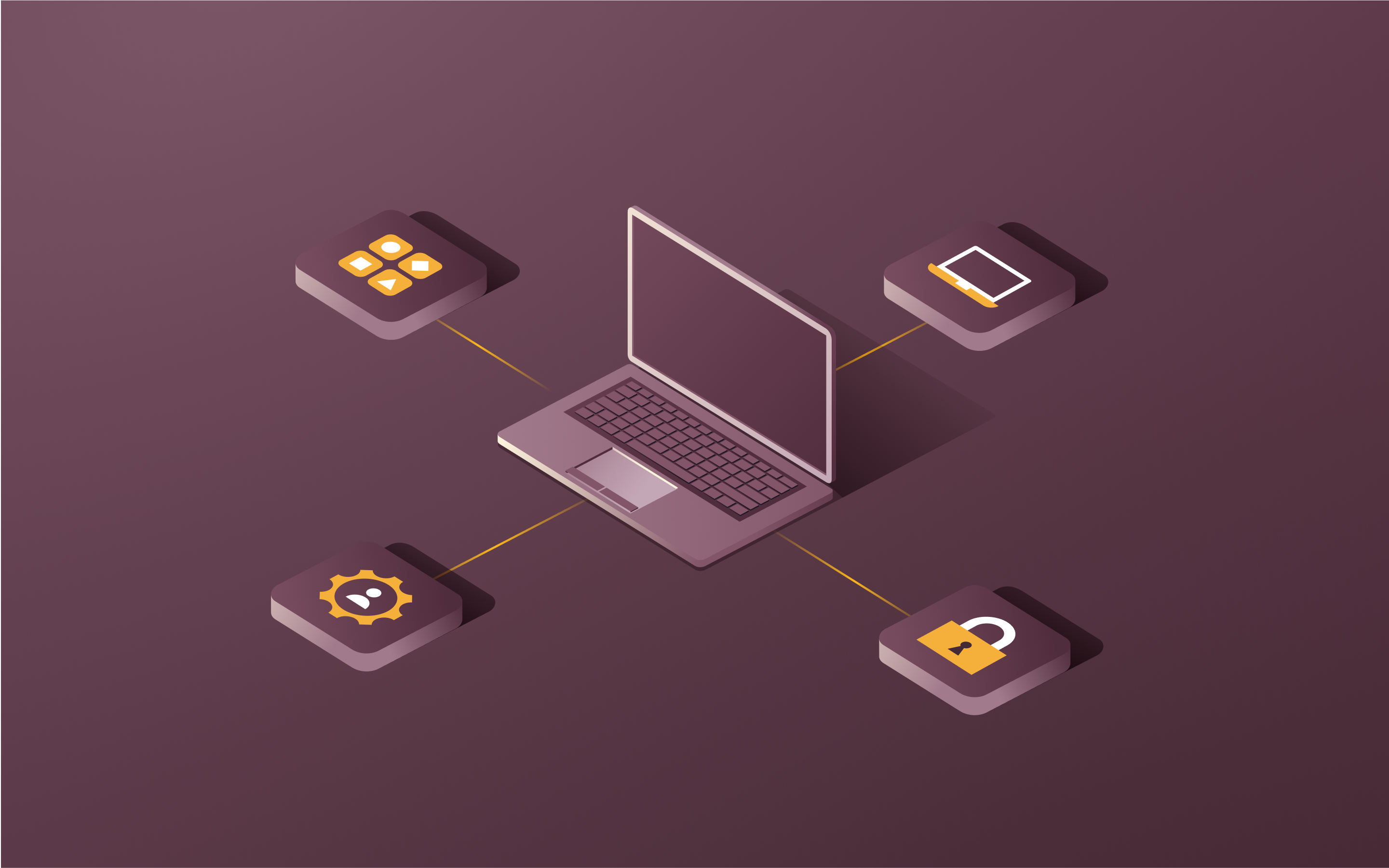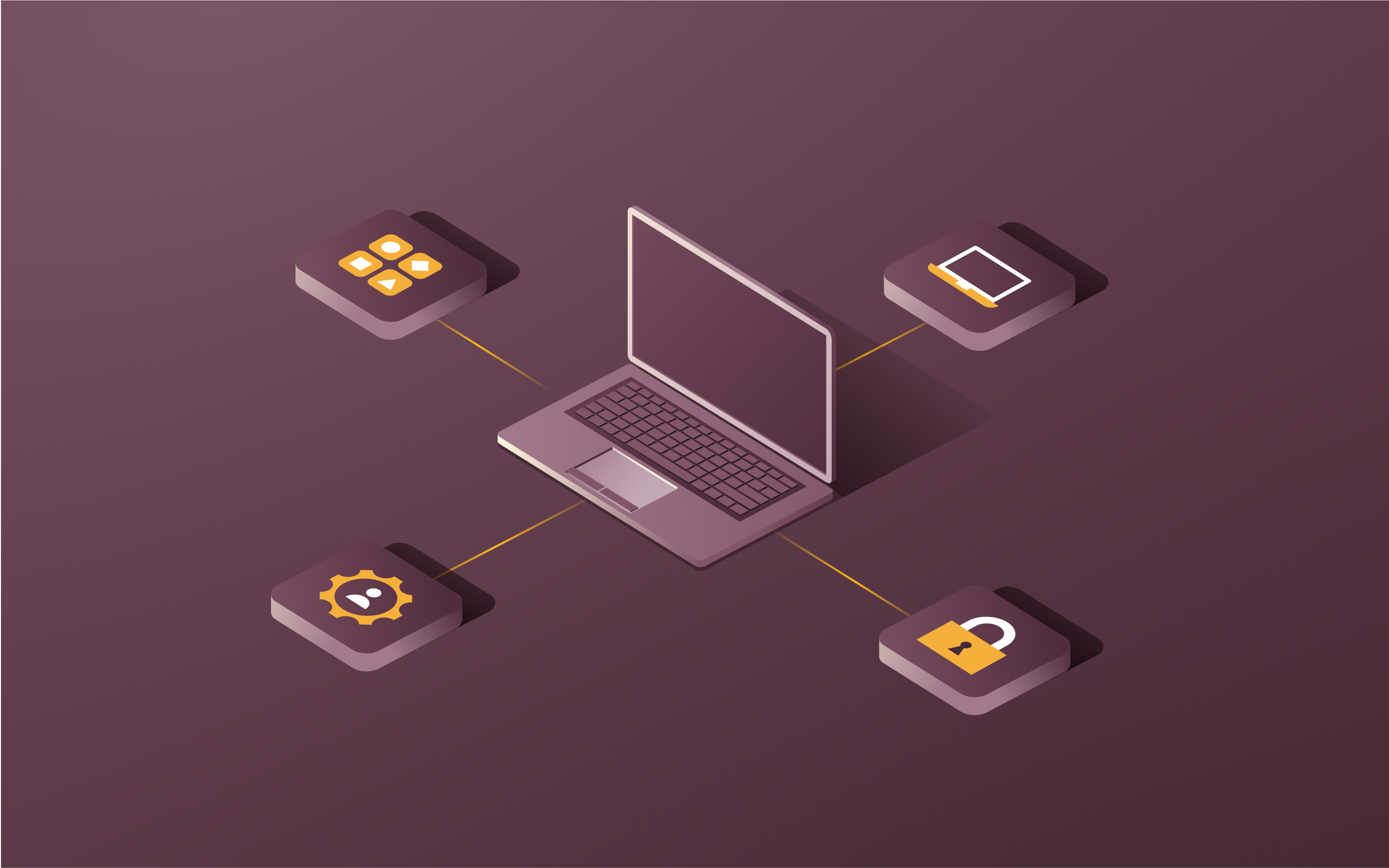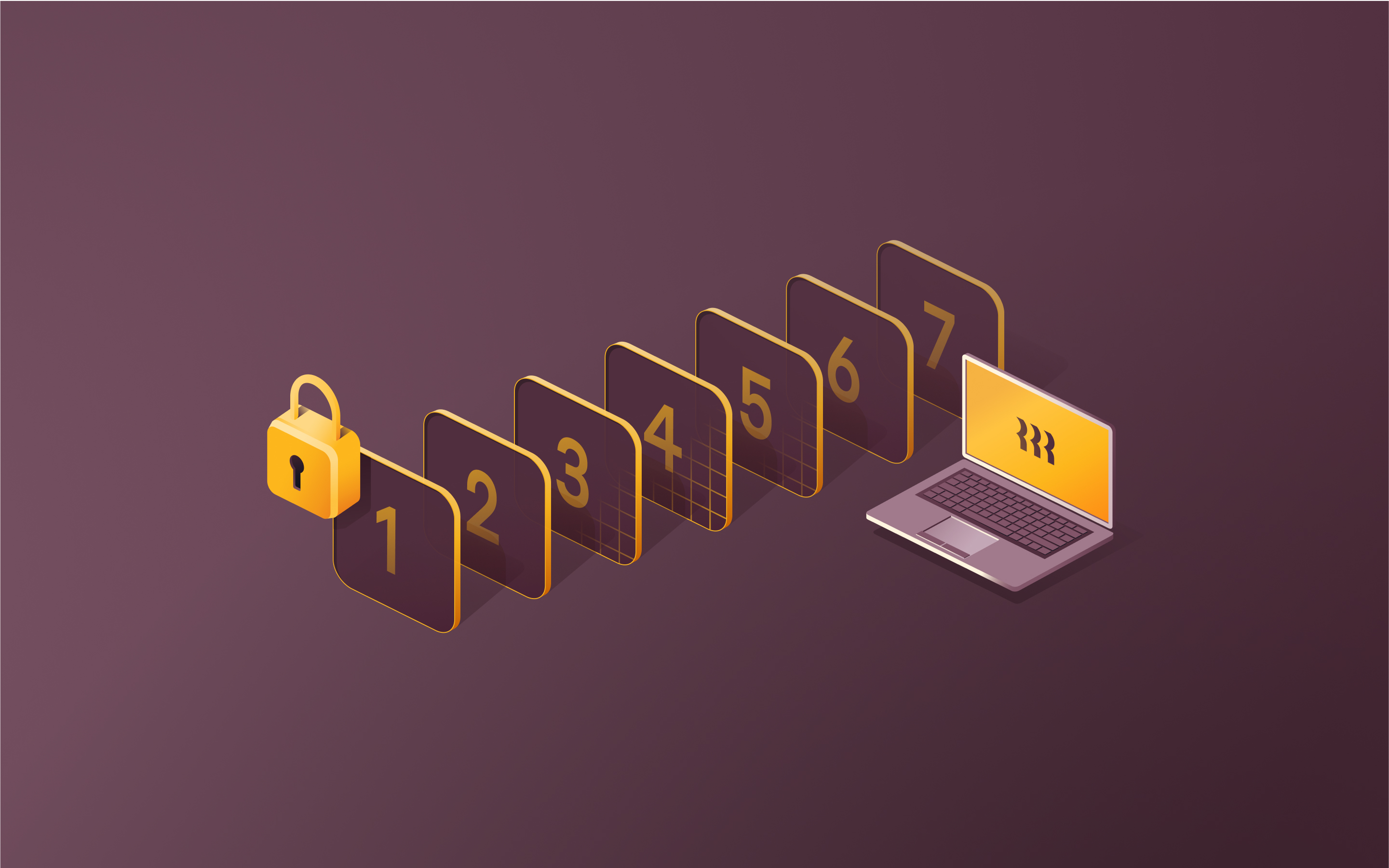How to perform a cybersecurity audit: Full guide for 2025

In a world where data breaches regularly make headlines and cost companies millions, cybersecurity audits have become a necessary part of doing business. They're not just a bureaucratic box to check, but a powerful tool for identifying cyber risks, plugging gaps, and keeping your most valuable assets safe.
Think of it like a checkup for your IT infrastructure. Just like regular doctor visits help maintain your physical health, periodic security risk assessments are crucial for the wellbeing of your systems and data, as cyber threats often lurk undetected until it's too late.
The good news is, cybersecurity audits don't have to be a painful, disruptive process. With the right preparation, tools, and mindset, you can turn these assessments into a proactive, empowering experience for your team. One that not only strengthens your defenses, but also aligns IT with broader business goals.
In this guide, we'll break down everything you need to know to conduct effective, stress-free cybersecurity audits.
What is a cybersecurity audit?
In simple terms, a cybersecurity audit is a systematic evaluation of an organization's information security controls and practices. The goal is to ensure that all your technical safeguards and processes are:
a) Appropriate for your specific risks and requirements
b) Properly implemented and configured
c) Effective in protecting critical assets and data
d) Compliant with relevant laws, regulations, and industry standards
In other words, it's a comprehensive checkup of your entire IT ecosystem—your hardware, software, networks, data handling processes, and even your people and their security habits. By shining a bright light into every nook and cranny, IT audits help uncover hidden vulnerabilities and gaps that could open the door to breaches or compliance failures.
What is the scope of a cybersecurity audit?
The specific scope of a cybersecurity audit will depend on factors like your industry, size, and compliance requirements. But in general, a thorough cybersecurity audit will cover things like:
- Asset management: Do you have a complete, up-to-date inventory of all hardware, software, and data assets? Are they properly classified based on sensitivity?
- Access controls: How do you ensure that only authorized users can access sensitive information and systems? This includes password policies, multi-factor authentication, role-based permissions, and offboarding processes.
- Network security: Is your network properly segmented to limit access between different trust levels? Are firewalls, IPS/IDS, and other boundary defenses properly configured? How are remote connections and mobile devices secured?
- Data protection: How is sensitive data identified, classified and secured, both at rest and in transit? What encryption, masking, and leakage prevention techniques are in place?
- Incident response: Do you have a well-documented, tested incident response plan for detecting, containing and recovering from security incidents? Who's accountable for what actions?
- Compliance: Are your security controls and processes in line with relevant compliance standards like HIPAA, PCI-DSS, GDPR, NIST or SOC 2? What evidence and documentation do you maintain?
By assessing your environment through these different lenses, auditors can get a comprehensive view of your security posture and identify any areas that need shoring up. The end deliverable is typically a detailed report with specific findings and recommendations for remediation.
What are the benefits of a cybersecurity audit?
Speaking of today's threat landscape, it's not a pretty picture. The numbers paint a stark reality:
- Cybercrime costs are expected to hit $11.36 trillion annually by 2026 (Statista)
- The average cost of a data breach reached $4.88 million in 2024, a 10% increase from 2023 (IBM)
- It takes an average of 258 days to identify and contain a breach (IBM)
Those stats are scary enough on their own. Now consider that 56% of IT leaders say their organization is unprepared to handle a cyberattack. Clearly, most businesses have some work to do when it comes to strengthening cyber defenses.
And that's exactly where regular security audits come in. By proactively assessing your security controls on a periodic basis, you can:
Gain a holistic, unbiased view of your security posture
It's easy to develop blind spots when you're deep in the weeds of day-to-day IT operations. Audits bring in an outside perspective to help identify cybersecurity risks you might have overlooked. They also provide a consolidated view across all your disparate security tools and processes.
Identify and mitigate risks before they're exploited
The longer vulnerabilities go undetected, the more time attackers have to find and take advantage of them. Audits surface hidden gaps so you can plug them before they're breached. It's like patching a hole in your roof before the rainy season hits.
Prioritize limited resources based on real data
Most IT teams are spread thin these days. Audits give you a risk-based framework for deciding where to focus your time and money for the greatest security ROI. You can tackle the most critical, high-likelihood issues first.
Prove compliance and build trust with stakeholders
For many businesses, cybersecurity audits are a regulatory requirement. Even if they're not legally mandated for you, they provide important third-party validation of your security posture. This assurance is increasingly vital for winning customer contracts, securing partnerships, and attracting investment.
Benchmark your program and track improvement
Security is a continuous journey, not a one-time destination. Regular audits establish a baseline to measure progress against. They help ensure you're not backsliding or getting complacent. And they give you concrete evidence to show leadership that your efforts are paying off.
Strengthen your security culture and accountability
Audits are a powerful way to put security on everyone's radar, not just IT. By involving stakeholders from across the organization, you foster a shared sense of responsibility. And by implementing audit recommendations, you demonstrate that security is a priority, not an afterthought.
Internal vs external cybersecurity audits: What’s the difference?
Now, when we talk about the types of security audits, it's important to distinguish between two main categories: internal and external. As you might guess, the key difference is who's doing the assessing.
Internal audits are conducted by your own staff, typically members of the IT or security team who are independent from the day-to-day management of the systems being evaluated. The goal is to self-identify issues and drive continuous improvement within the organization.
External audits, on the other hand, bring in third-party experts to evaluate your security controls against a specific standard or regulation. These are usually formal engagements with rigorous testing and evidence requirements. Examples might include a PCI audit for companies handling credit card data, or a SOC 2 assessment for SaaS providers.
There are pros and cons to each approach. Internal audits give you more control over the process and allow for more frequent check-ins. But they can also be limited by internal biases and knowledge gaps. External audits provide that objective, expert validation, but they can be more time-consuming and costly.
In practice, most organizations will use a combination of both throughout the year. Regular internal assessments help keep security top-of-mind and catch issues early. Periodic external audits provide that gold-star assurance for customers and regulators.
The key is to find the right balance for your organization based on your specific risk profile, compliance requirements, and resources. There's no one-size-fits-all approach.
How to conduct a cybersecurity audit: 6 key steps
So you know why cybersecurity audits are important and what they typically cover. But how do you actually go about conducting one? While the specifics may vary based on your organization and the type of audit, here's a general step-by-step process:
Step 1: Define your audit objectives and scope
Start by clearly articulating what you want to achieve with the audit. Are you assessing compliance with a particular standard? Evaluating the effectiveness of specific controls? Looking for improvement opportunities? Then, determine which systems, applications, and data will be in scope. You may not be able to audit everything at once, so prioritize based on risk and criticality. Document the rationale for what's in and out of scope.
Step 2: Establish your audit criteria and benchmarks
What yardstick will you use to measure your security posture? This could be an industry framework like NIST or CIS, a regulatory standard like HIPAA or GDPR, or your own internal policies. The key is to have a clear set of controls and security best practices to evaluate against. This ensures consistency and objectivity in the audit process.
Step 3: Conduct interviews and walkthroughs
Kick off the audit with a series of interviews with key stakeholders, IT and security staff, application owners, compliance officers, and even end users. The goal is to understand current processes, pain points, and perceived risks. Then, conduct walkthroughs of in-scope systems and environments. Observe how data flows through the organization, what security controls are in place, and how they're being used (or not used) in practice.
Step 4: Perform technical testing and analysis
This is where you roll up your sleeves and get into the nitty-gritty of vulnerability scanning, penetration testing, configuration reviews, and other technical assessments. A thorough network security audit should be conducted to evaluate firewall rules, network segmentation, and traffic patterns. The exact methods will depend on the audit scope and criteria. You may use a combination of manual testing and automated tools. The key is to be thorough and document everything.
Step 5: Review and analyze results
Once all the data is collected, it's time to connect the dots. Review your findings and look for patterns or common themes. Determine the root causes of any issues identified. Assess the potential impact and likelihood of each finding to prioritize them by risk level. And don't forget to highlight what's working well.
Step 6: Document and communicate your findings
The final step is to compile your findings into a clear, actionable report. Document the audit objectives, scope, criteria, and methods used. Present your discoveries and recommendations in a way that's easy for non-technical stakeholders to understand. Share the report with relevant leaders and work with them to develop a remediation plan. Assign owners and due dates for each action item, and schedule follow-up meetings to track progress.
How often should a company perform cybersecurity audits?
Each company needs to figure out its own schedule for cybersecurity audits based on what makes sense for their business. This timing depends on their industry, size, what regulations they need to follow, and their overall cybersecurity risk level.
Here are some common situations when companies should conduct cybersecurity audits:
- Once a year: Most organizations benefit from a thorough review of all their security measures annually. This helps catch issues that might have developed over time and ensures nothing major has been overlooked.
- After making big changes: Whenever you significantly change your systems—like moving to the cloud, installing new software, or reorganizing your network—it's smart to check that these changes haven't created new security problems. A focused software security audit may be necessary when implementing new applications or making these updates.
- After a security incident: If you've experienced a breach or attack, you should audit your systems to understand what went wrong and fix the underlying issues that allowed it to happen.
- During business changes: When buying another company or merging with one, you'll want to check their security before finalizing the deal, and then again after systems are combined to make sure everything is protected.
- When new laws come into effect: If new regulations affect your business, you'll need to audit your systems specifically to make sure you're following the new rules.
- Regular vulnerability checks: Every few months, it's good practice to look specifically for technical weaknesses in your systems that hackers might exploit, even if you're not doing a full audit.
Tips for effective cybersecurity audits
Here are some pro tips to set you up for success:
1. Get buy-in from leadership and stakeholders early: Audits can be disruptive and may surface some uncomfortable truths. It's critical to have the support and engagement of your executive team from the get-go. Help them understand the importance of the audit and how it aligns with broader business goals.
2. Assemble a diverse, cross-functional audit team: Don't leave it all to the IT department. Include representatives from compliance, legal, HR, and affected business units in the audit planning and execution. Different perspectives help ensure a more comprehensive assessment.
3. Leverage established frameworks and tools: You don't have to reinvent the wheel. Basing your audit on industry standards and using reputable data security tools can save time and improve the quality of your results. Just make sure you understand how to interpret and act on the outputs.
4. Communicate early and often with auditees: No one likes surprises, especially during an audit. Give affected teams plenty of notice about the audit timeline and expectations. Hold kick-off meetings to explain the process and address any concerns. Regular check-ins help keep everyone informed and engaged.
5. Automate where possible, but don't skimp on manual testing: Security automation tools can be a huge time-saver, especially for tasks like vulnerability scanning and log analysis. But they're not a silver bullet. Manual testing and observation are still essential for uncovering more nuanced issues and validating automated results.
6. Focus on risk, not just compliance: It's easy to get caught up in checking boxes to meet audit requirements. But remember, the ultimate goal is to reduce risk to the business. Prioritize findings based on their potential real-world impact, not just their compliance implications. This includes ensuring you have a robust incident response plan that's regularly tested and updated.
7. Use audits as a learning opportunity: Audits have an unfairly bad rap as a "gotcha" exercise. Instead, frame them as a chance for everyone to learn and improve. Encourage open, honest discussion about what's not working and brainstorm solutions together. Celebrate successes and quick wins along the way.
Streamline your cybersecurity audits with Rippling
Now, if you're feeling overwhelmed by the prospect of conducting a cybersecurity audit on your own, you're not alone. The good news is, there are powerful tools available to streamline the process and take some of the heavy lifting off your plate.
One such tool is Rippling, an all-in-one HR, IT, and security platform that makes it easy to centrally manage and secure your entire workforce.
With Rippling’s IT management software, you can:
- Automate access controls based on employee roles and attributes
- Enforce strong authentication and security policies across all apps and devices
- Monitor and manage all endpoints from a single dashboard
- Maintain a real-time inventory of all hardware, software, and user accounts
- Easily generate compliance reports and audit trails
By unifying your employee data with IT and security systems, Rippling eliminates many of the manual, error-prone processes that can make audits so painful. You have a single source of truth for who has access to what, and can quickly prove it with just a few clicks.
Whether you're preparing for a SOC 2 or ISO 27001 audit, Rippling gives you the visibility and control you need to ace it with confidence.
Cybersecurity audit FAQs
What are the three main phases of a cybersecurity audit?
- Assessment: Examining the existing system, including computers, servers, software, databases, access rights, and current security measures.
- Assignment: Assigning appropriate solutions to identified security gaps, which may involve delegating tasks to internal professionals or bringing in external contractors.
- Audit: Conducting a final check after implementing proposed solutions to ensure all installations, upgrades, and patches operate as expected.
Is SOC 2 a cybersecurity audit?
A SOC 2 audit is one specific type of external cybersecurity audit. It focuses on a service organization's controls related to security, availability, processing integrity, confidentiality, and privacy. The goal is to provide assurance to customers that their data is being properly protected based on the AICPA's trust services criteria.
What to do after a cybersecurity audit?
Treat the audit report as a starting point, not an ending point. After a cybersecurity audit, gather your team to review findings and prioritize fixes based on risk. Create a clear action plan with responsible owners and deadlines for each item. Most importantly, use what you've learned to strengthen your overall security program by updating policies, investing in necessary tools or training, and continuing to monitor key risks.
What occurs during a security audit?
During a security audit, auditors systematically evaluate your organization's security controls against established criteria. This typically involves document reviews, interviews with key personnel, technical testing of systems and networks, and analysis of findings. The point is to identify gaps, vulnerabilities, and non-compliance issues, then provide recommendations for remediation.
Generate comprehensive compliance reports with a few clicks
This blog is based on information available to Rippling as of March 31, 2025.
Disclaimer: Rippling and its affiliates do not provide tax, accounting, or legal advice. This material has been prepared for informational purposes only, and is not intended to provide or be relied on for tax, accounting, or legal advice. You should consult your own tax, accounting, and legal advisors before engaging in any related activities or transactions.











